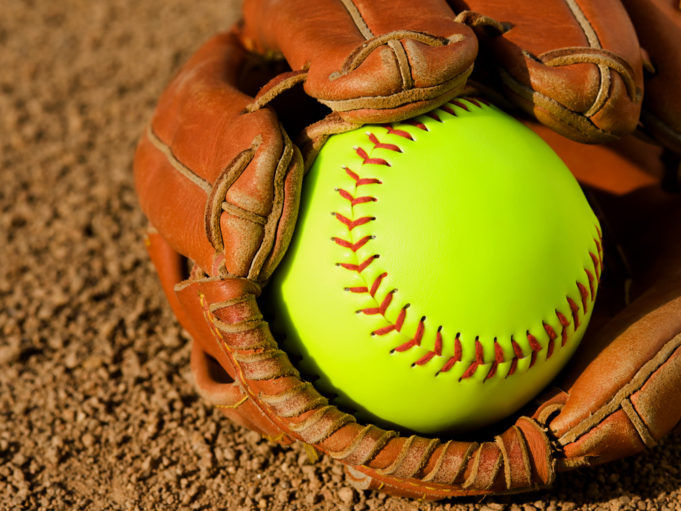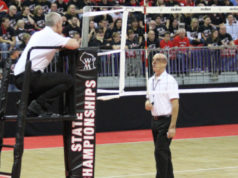An infield fly situation includes many variables for umpires to take into consideration. The wind or sun affects the calling of the infield fly. Interference can occur. A fielder may intentionally drop a ball after an infield fly call. There are many more possible scenarios. Let’s examine a few of them.
The effects of wind or sun.
On a windy day, the umpiring crew must discuss that element and remind each other not to call an infield fly too soon. The wind could carry the ball away from the infielders so the ball cannot be caught with the required ordinary effort. Remember, the infield fly rule was designed to protect the offensive team from an unfair double play on a pop up and not to obtain outs for the defensive team that failed to catch the ball.
If a fielder loses the ball in the sun on an infield fly situation and cannot catch the ball, executing an undeserved double play would still be possible for a fielder who quickly recovers the ball. Umpires must strive to interpret rules realistically rather than legalistically.
Interference after an infield fly.
If a runner interferes with a fielder in the act of fielding a batted ball after an infield fly has been declared, the runner is out. The ball is dead and the batter is out on the infield fly. However, be ready to explain your call to the wild-eyed offensive coach who had two on and no outs just 30 seconds earlier.
A runner is out along with the batter after a declared infield fly when the runner is struck by a batted ball in fair territory unless the runner is touching her base. When the runner is struck while on base, the ball is live if the nearest fielder is in front of the base and dead if the nearest fielder is behind the base. The batter is out on the infield fly, but the runner who was on base when hit by the batted ball is not out.
Intentionally dropped ball after infield fly.
An intentionally dropped ball cannot occur once an infield fly is declared. The infield fly rule takes precedence over the intentionally dropped ball rule.
That’s because the batter is already out on the infield fly call and therefore cannot be called out again if an infielder intentionally drops a batted ball in flight. That’s another situation when the calling umpire must assertively announce, “That’s an infield fly! The batter’s still out! That’s an infield fly!”
Your forceful announcement will prevent a runner from being duped by a fielder. You also have good ammunition for the offensive coach and can honestly and confidently tell the coach, “I assertively announced the batter was out several times for the benefit of your runners.”
For the record, to have an intentionally dropped ball in ASA, NCAA and USSSA SP, the fielder must legally catch the ball and then purposely drop it in a separate act. Uniquely, in NFHS and USSSA FP, a ball not legally caught can be ruled intentionally dropped if the fielder guides the ball to the ground. Keep in mind that an intentionally dropped ball cannot be called after an infield fly is declared.
Your infield fly zone size.
The area of your infield fly zone will increase proportionately as the skill levels of the players rise. Adjust the size of your infield fly zone proportionately larger according to the increasing amount of money your game fee pays. I’m considering that normally, the higher your fee, the larger the area of your infield fly zone will be based on the skills of the fielders.
Consider that ordinary effort occurs when an infielder can settle comfortably under a ball or be easily moving under the ball while still facing the plate. Wait longer to declare an infield fly when an infielder is back peddling away from the plate.
In a backpedaling situation, it is less likely the fielder will consider allowing a ball to drop. In such situations an umpire can still protect the offensive team by declaring an infield fly later than it is usually called. Contrary to popular opinion, calling an infield fly late can be good umpiring because the crew has protected the offensive team.
Do not call an infield fly on batted balls far out on the outfield grass, either. Also, the zone will shrink with older adult and senior players, and lower level recreation games.
Infield fly umpire-to-umpire signals.
Use umpire-to-umpire signals to alert and convey information between umpires. The plate umpire will initiate umpire-to-umpire signals. Those signals are vital in establishing good crew communication. Base umpires must acknowledge those signals.
The plate umpire will put “on” the infield fly by placing the open right palm on the upper left chest before taking a stance behind the catcher.
To “wipe off” the infield fly when it’s no longer in effect, the umpires will use a downward wiping motion with the right hand on top of the left forearm while brushing from the elbow to the wrist.
Signaling and calling the infield fly.
To officially declare the infield fly, an umpire will extend his or her right arm overhead with a clenched fist and assertively call, “Infield fly, the batter is out.” Always make sure that everyone knows that you’ve declared the infield fly.
What's Your Call? Leave a Comment:
Note: This article is archival in nature. Rules, interpretations, mechanics, philosophies and other information may or may not be correct for the current year.
This article is the copyright of ©Referee Enterprises, Inc., and may not be republished in whole or in part online, in print or in any capacity without expressed written permission from Referee. The article is made available for educational use by individuals.



















